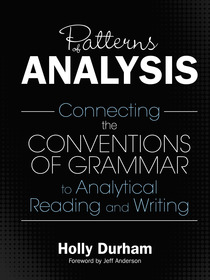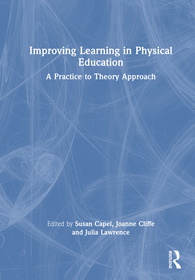
Patterns of Analysis
Connecting the Conventions of Grammar to Analytical Reading and Writing
- Publisher's listprice GBP 36.99
-
17 671 Ft (16 830 Ft + 5% VAT)
The price is estimated because at the time of ordering we do not know what conversion rates will apply to HUF / product currency when the book arrives. In case HUF is weaker, the price increases slightly, in case HUF is stronger, the price goes lower slightly.
- Discount 10% (cc. 1 767 Ft off)
- Discounted price 15 904 Ft (15 147 Ft + 5% VAT)
Subcribe now and take benefit of a favourable price.
Subscribe
17 671 Ft

Availability
Not yet published.
Why don't you give exact delivery time?
Delivery time is estimated on our previous experiences. We give estimations only, because we order from outside Hungary, and the delivery time mainly depends on how quickly the publisher supplies the book. Faster or slower deliveries both happen, but we do our best to supply as quickly as possible.
Product details:
- Edition number 1
- Publisher Routledge
- Date of Publication 29 December 2025
- ISBN 9781032761510
- Binding Paperback
- No. of pages258 pages
- Size 280x216 mm
- Weight 453 g
- Language English
- Illustrations 40 Illustrations, color; 40 Line drawings, color; 149 Tables, color 700
Categories
Short description:
Critical thinking and analytical skills are more crucial than ever. Yet, too often, students struggle to bridge the gap between creative expression and analytical rigor. This book provides a way of teaching reading and writing that integrates grammar and literary analysis to empower students to engage deeply with texts across genres.
MoreLong description:
In today's rapidly changing world, the ability to think critically and analyze complex texts is more essential than ever. Yet, too often, students struggle to bridge the gap between creative expression and analytical rigor. Patterns of Analysis provides a revolutionary approach to teaching analytical reading and writing—one that seamlessly integrates grammar and literary analysis to empower students to engage deeply with texts across genres.
Grounded in a descriptivist lens, this book offers concrete entry points into analysis through grammar patterns, helping students move beyond formulaic responses to develop their own insightful interpretations. With adaptable lesson structures, scaffolded invitations to think critically, and strategies that encourage autonomy, Patterns of Analysis ensures that every student—whether in middle school or high school—has the tools to confidently break down and articulate meaning in any text.
Designed for flexibility, this resource supports educators working within existing curricula or developing their own, offering clear guidance on lesson planning, responsive instruction, and meaningful discussion strategies. Whether you're teaching fiction, nonfiction, or a blend of both, this book will transform the way students approach reading and writing—preparing them not just for academic success, but for life.
Perfect for English educators, curriculum designers, and anyone invested in fostering analytical thinkers, Patterns of Analysis is more than a teaching framework—it’s an invitation for students to see the world through a critical, thoughtful lens.
MoreTable of Contents:
Part 1: Getting Started with the Patterns of Analysis Process 1. Lenses and Entry Points: Opening the Door to Analysis 2. A Teacher’s Guide to Planning with Patterns of Analysis 3. The Patterns of Analysis Lesson Structure 4. Responsive Instruction: Flexing within the Patterns of Analysis Structure Part 2: Demonstration Lessons with the Patterns of Analysis Process 5. Actions speak louder than words: Why do authors need to create a sense of action? 6. “What we’ve got here is a failure to communicate”: Why Do Authors Need Dialogue? 7. “I got rhythm/I got music”: Why Do Authors Use Sentence Variety To Create A Rhythm In Their Writing? 8. The Space-time Continuum: Why Do Authors Need to Ground us in Space and Time? 9. Relationship Status: Why Do Authors Need to Connect Sentences Differently? 10. Dash It All: Why Do Authors Need Dashes? 11. “Resistance is Futile”: Why Do Authors Need Subordinate Clauses and Conditionals? 12. Veni, Vidi, Vici: Why Do Authors Need Parallel Constructs? 13. Don’t Judge a Book by Its Cover: Why Do Authors Need Appositive Phrases? 14. So Nosy!: Why Do Authors Ask Readers Questions?
More






